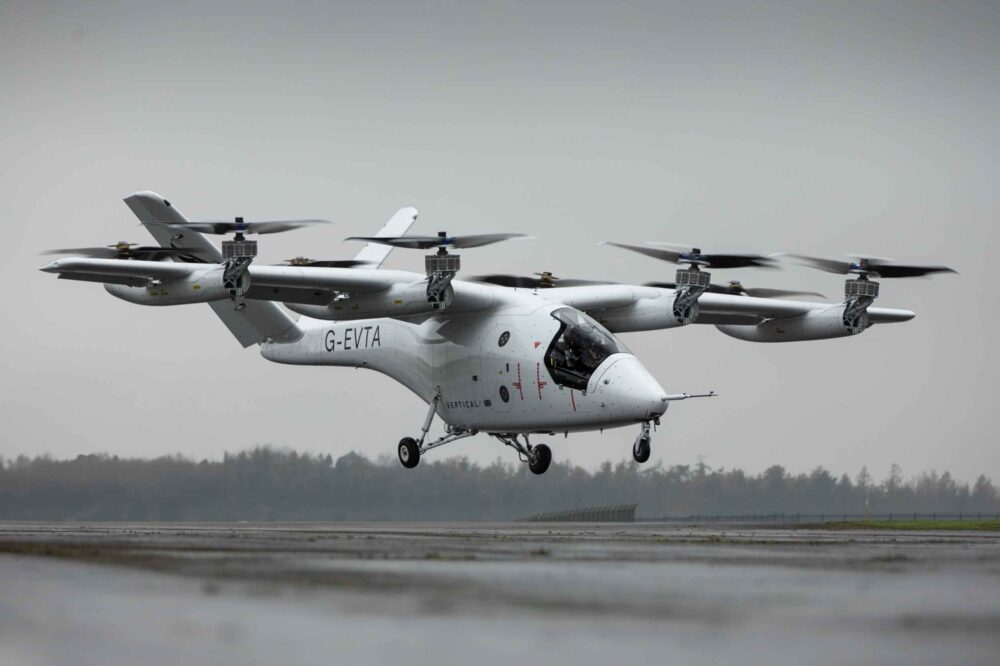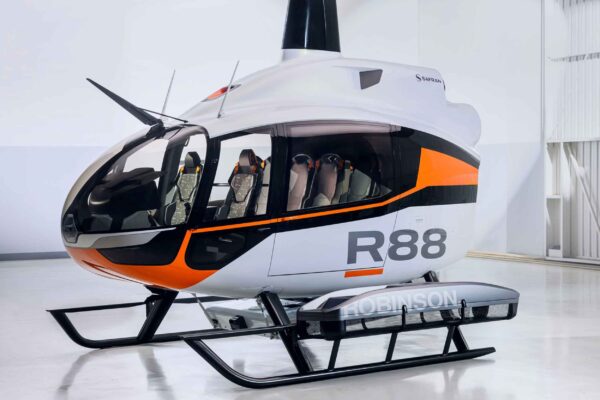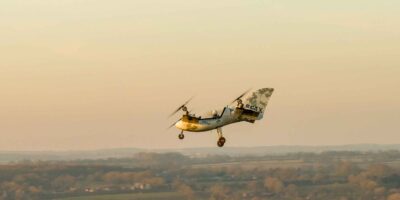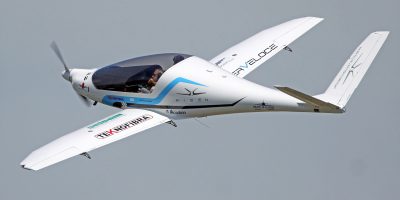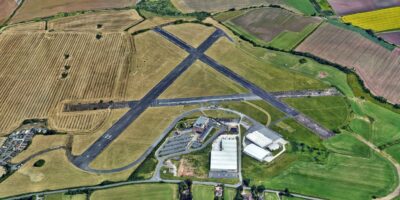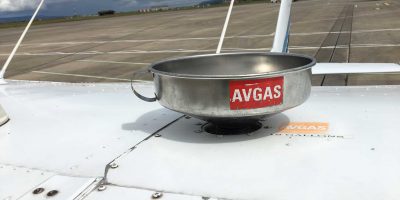Tuesday, 12 November 2024 is crunch day for Vertical Aerospace, the Bristol-based developer of the VX4 electric Vertical Takeoff and Landing (eVTOL) aircraft.
Not only are talks going on to refinance the company with a business update due in a webcast this afternoon, but the VX4 prototype has just made its first ‘untethered’ flight.
The flight took place at Vertical’s Flight Test Centre at Cotswold Airport, UK. It’s the start of Phase 2 piloted flight testing following expansion of Permit to Fly from the UK Civil Aviation Authority (CAA).
Phase 2 testing includes vertical take-off and landing and low-speed flight manoeuvres – ‘thrustborne’ flights as Vertical describes them.
“Thrustborne flights are designed to assess the aircraft’s stability, battery efficiency, control characteristics, aerodynamics, structural and dynamic loads and performance across different speeds, enabling further assessment of how the VX4 behaves under real-world flight conditions,” said a statement.
Stuart Simpson, CEO of Vertical Aerospace, said, “It’s great to see the VX4 throw off the tethers and move to the next phase of our piloted test flight programme. We now enter a realm that very few companies in the world have achieved. Our team is thrilled with the significant strides we continue to make with the VX4 prototype as we expand our learnings and take another step towards connecting communities with faster, cleaner and safer travel.”
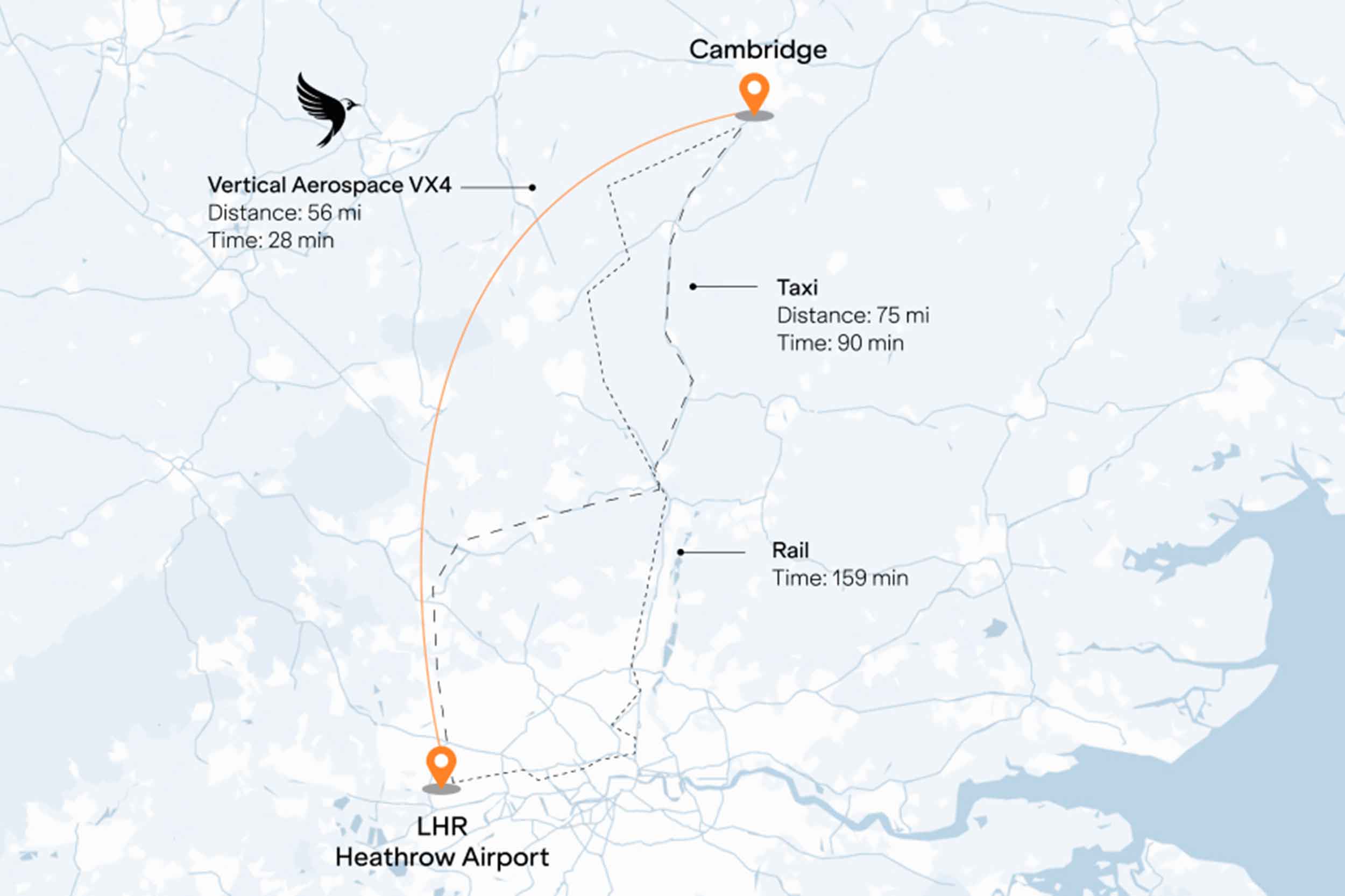
One of the possible routes for the VX4 when it’s in production and operating as an air taxi. Images: Vertical Aerospace
Chief Test Pilot Simon Davies, who flew the VX4 prototype, said, “The aircraft performed absolutely brilliantly, and was really stable in the hover. The flight controls felt good, and it’s great to have the tethers off.
“Everything on the aircraft worked perfectly – no surprises, nice and boring – a great test flight. Definitely my favourite and most memorable flight in thousands of flight hours, but my job was really easy – standing on the shoulders of giants! So proud of our team.”
Vertical will now progress through Phase 2 while working with the CAA to extend its Permit to Fly and move onto Phase 3 – wingborne flight tests.
This next stage will involve piloted take-off, flight, and landing like a conventional aircraft using wing-generated lift. The primary focus of this phase is expanding the transition envelope as safely as possible – working down in speed from high altitude rather than up in speed from low altitude, which is much safer. Phase 4 will involve transitioning between thrustborne and wingborne flight modes.
Vertical’s plan: Flightpath 2030
Ahead of its business update webcast, Vertical has also released a document detailing its future plans. Called Flightpath 2030, A Strategy to Pioneer Electric Aviation, by the end of this decade, Vertical aims to:
- Deliver at least 150 aircraft to our customers, achieving significant milestones in high-quality, large-scale production.
- Achieve an annual production rate exceeding 200 VX4 units in Q4 2030, with plans to scale up to greater than 700 units per year in the medium-term to deliver against a leading pre-order book.
- Position Vertical to become sustainably cash generative, achieving cash break-even in 2030, given the capital efficiency of its focused OEM business model. Gross profit margin is currently expected to build to >40% in the following years.
- Certify the VX4 in 2028, followed by certifying its first major upgrade in 2030. While the current prototype seats four passengers, its cabin width and robust powertrain enable the potential to accommodate six passengers and extend its range.
- Maintain a zero accident rate, certifying to the highest level of safety – 10-9, the same as for commercial airliners.
Vertical Aerospace


